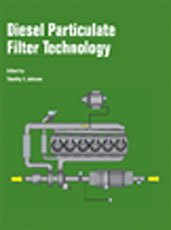Technical Paper
THE VOLUMETRIC EFFICIENCY OF FOUR-STROKE ENGINES
1952-01-01
520259
PARAMOUNT among the problems relating to the efficiency of the internal-combustion engine is that of breathing capacity, or air consumption. Considering volumetric efficiency to be the most valuable parameter in an analytical or experimental approach to this problem, the authors of this paper have devoted several years of study to this factor in relation to 4-stroke engines. The studies have resulted in extensive findings, some of which have already been published. This paper attempts to bring together in readable form the results of the work to date, including both published and unpublished data. The authors discuss in detail the effect of volumetric efficiency on operating variables, piston speed, inlet-valve flow capacity, cylinder design, and size. They introduce a gulp factor, the inlet-valve Mach index, and explain how this factor can be used to guide engineers.


